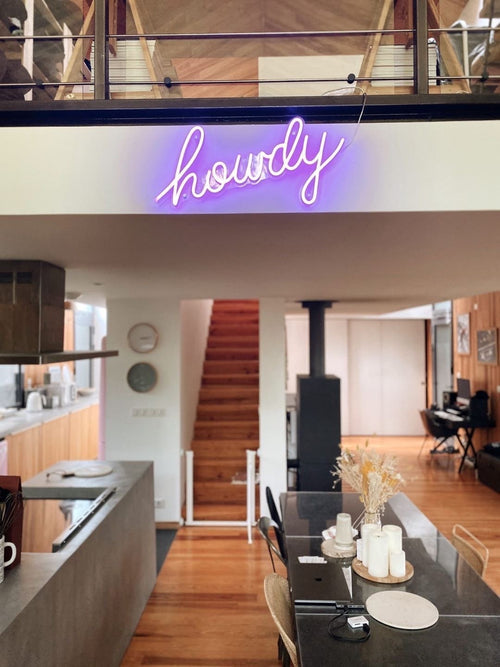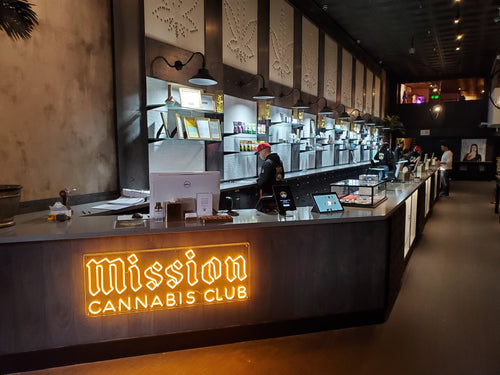Introduction to Bar Signs
Bar signs are an essential part of the visual identity of a bar or pub, serving multiple purposes from attracting customers to enhancing the overall atmosphere. These signs are typically displayed outside or inside the establishment and can range from simple, functional displays to artistic, neon-lit masterpieces. They play an important role in setting the tone for the type of experience customers can expect, helping to establish the personality and character of the bar.
Types of Bar Signs
-
Exterior Signs: Exterior bar neon signs are often the first point of contact between a potential customer and a bar. They are usually designed to catch attention from a distance, often featuring the name of the establishment in bold, readable fonts. Exterior signs can be simple, like a wooden board with hand-painted lettering, or high-tech with LED displays or neon lights. For example, a classic pub might have a chalkboard sign outside, advertising drink specials, while a trendy cocktail bar may opt for a neon sign that reflects its modern, sleek ambiance.
-
Interior Signs: Inside the bar, signs can help guide customers, suggest drinks, or set the mood. These include menu boards, directional signs (e.g., to the restrooms or the bar counter), and decorative signs that add to the bar's aesthetic. The signs inside the bar can be more artistic and personalized, reflecting the bar’s theme, whether it’s a sports bar, a tiki bar, a dive bar, or a speakeasy.
-
Digital and Interactive Signs: With the rise of technology, digital bar signs have become more popular in bars, especially in larger venues. These can display rotating drink specials, happy hour timings, or event announcements. Interactive screens allow customers to browse drink options, place orders, or even engage in entertainment like trivia or jukebox music. Digital signage enhances customer engagement by providing real-time updates, promotions, and interactive content.
-
Neon Signs: Neon signs are iconic in the bar industry, often conveying a sense of nostalgia and vibrancy. They are particularly effective for attracting attention from passersby, especially in busy nightlife districts. Whether it's a glowing beer mug, a whiskey glass, or a catchy phrase like "Happy Hour," neon signs offer a visually appealing way to stand out. The bright, colorful glow of neon can also create a welcoming and lively atmosphere, inviting people into the bar to unwind.
-
Vintage and Retro Signs: Vintage bar signs, often made from tin or enamel, evoke a sense of nostalgia. These signs may feature logos, slogans, or images that remind patrons of the past, offering a timeless feel. Retro signs are popular in bars that aim to create a throwback atmosphere, such as 50s-style diners, rock and roll clubs, or old-school saloons. These signs can reinforce the theme of the bar and provide a comforting, familiar vibe for patrons.
Bar Signs and Identity

Bar signs are more than just practical tools to convey the name of the establishment or advertise specials; they are integral to the branding and identity of the bar. The design of a bar sign can set expectations and establish a unique presence in a crowded marketplace. For instance:
- A neon sign with vibrant colors and flashy animations may be suitable for a high-energy, party-focused bar, whereas a rustic wooden sign with hand-painted lettering may suggest a more laid-back, casual pub atmosphere.
- The typography, color scheme, and materials used in the sign's creation also contribute to the identity. A modern cocktail lounge might use sleek, minimalistic fonts, while a sports bar may opt for bold, uppercase letters in a sporty font.
The neon sign serves as an invitation to customers, offering them a glimpse into what kind of experience they might expect inside. In competitive neighborhoods, where multiple bars may be vying for the same group of customers, a well-designed sign can make all the difference in attracting attention and drawing in potential patrons.
Influence on Customer Experience
A bar sign is often a customer’s first interaction with the venue. As such, it plays an integral role in shaping their initial perceptions and expectations. Here's how:
-
Attracting Foot Traffic: A brightly lit, visually appealing bar signs can draw attention from afar. Whether it's a flashing neon light or a striking mural on the wall, bar signs help to attract foot traffic, especially in busy areas where bars compete for attention. When people see an intriguing or unique sign, it piques their curiosity and encourages them to step inside.
-
Setting the Tone: Bar signs set the tone for the bar experience. A sign featuring a humorous slogan can create a laid-back, fun atmosphere, while a sophisticated, dimly lit sign can convey a more upscale, intimate vibe. Patrons can often gauge the overall ambiance of the bar just by the sign, which helps them decide if it’s the right place for their mood or occasion.
-
Creating a Memorable Experience: Memorable bar signs can contribute to the overall experience of patrons. Whether it’s a clever, witty neon sign that sparks a laugh, a striking piece of artwork that adds visual interest, or an interactive digital screen that enhances engagement, the sign can create a unique and positive impression. Customers are more likely to return or recommend a bar that made an impact through its distinctive branding and inviting atmosphere.
-
Promotions and Specials: Many bars use their signs to communicate drink specials, happy hour times, or event promotions. This use of signage directly impacts the customer experience by informing patrons of deals and offerings, which can influence their decision to enter the bar or stay longer. Signage announcing live music, karaoke nights, or special discounts on cocktails can create a sense of urgency and excitement.
-
Facilitating Navigation: Within the bar, directional signs (for bathrooms, exits, or VIP areas) help patrons navigate the space comfortably. A well-organized and clearly marked bar space makes customers feel at ease, reducing confusion and frustration.
Impact on Bar Success
In the hospitality industry, where competition is fierce, bar signs can directly impact a bar’s success in several ways:
-
Brand Recognition: Over time, a unique and well-crafted bar sign becomes an iconic part of the bar’s identity. Think of famous bars with recognizable logos or designs, such as the "Cheers" sign in Boston or the "Hard Rock Café" logo. These signs become synonymous with the brand, helping build customer loyalty and brand recognition. A strong, memorable sign helps create a lasting impression and reinforces the identity of the bar, encouraging repeat visits.
-
Word-of-Mouth Marketing: A clever or creative bar sign can spark conversation and encourage word-of-mouth marketing. People love to share photos of unique signs on social media, which in turn promotes the bar to a broader audience. If a sign is particularly witty, charming, or visually striking, it may even go viral, bringing in more customers.
-
Competitive Edge: In areas with a high density of bars, such as entertainment districts or downtown areas, having a distinctive and attractive sign gives a bar a competitive edge. A sign can serve as a beacon in a sea of other establishments, helping the bar stand out and capture attention. For example, a bar might use digital signage or a well-placed outdoor sign to promote events and reach a wider audience.
-
Creating a Sense of Community: Bar signs can also help foster a sense of community by incorporating local culture, artwork, or references that resonate with the neighborhood. Bars that display artwork from local artists or use symbols that reflect local history can build a connection with the community, making patrons feel more attached to the establishment.
Conclusion
Bar signs are much more than just functional pieces of decor—they are integral to the bar's identity, ambiance, and overall customer experience. A well-designed sign can serve as a powerful marketing tool, drawing in potential customers and creating an unforgettable experience. From neon lights and vintage signs to digital displays and interactive boards, these signs not only attract attention but also convey the character and atmosphere of the bar. In the competitive world of hospitality, a memorable bar sign can give a bar the competitive edge it needs to thrive and succeed.




